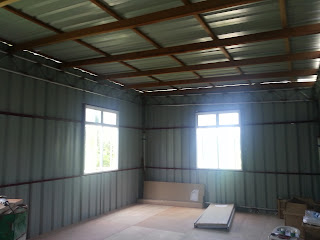1. Effect of tidal flow
The most important limiting factor which adversely affects a diver's work is the velocity of water flow. A flow of 1 knot has roughly the same effect on a diver as that of an 80 km/h wind acting on a man on land. The maximum tidal flow in which a diver can work effectively is, not surprisingly, about "1 knot. The ability to work in a strong tidal flow is dependent on the work task, the work location and adjacent physical support available to the diver.
2. Visual inspection
A diver looking, as he does, through layers of air, glass and water observes objects apparently larger and closer than they actually are. He is therefore liable to report incorrect dimen-sions if he relies solely on observation, and he should always use a sea-bed ruler. A spirit-level may be used to establish levels in shallow water.
3.Poor visibility
In rivers which run through highly populated or industrialized areas, visibility is often very poor. The converse usually applies in sparsely populated areas. Similarly, in coastal areas near river estuaries, the outflow of polluted rivers may adversely affect visibility many miles offshore although the prospect of good visibility improves further offshore. Apart from pollution caused by man, sand from the sea-bed brought into suspension by storms can reduce visibility to a few centimeters even well offshore. After a few days of good weather this can change to give a visibility in excess of 30m. In poor visibility, high- candlepower lights illuminate only the particles in suspension so the diver sees myriads of bright reflections from the particles. Special low-candlepower lights are available for close inspection in poor visibility. In areas of permanent low visibility, tactile measuring devices are invaluable and the diver's fingers become his eyes.
Underwater floodlights are likely to be useless in shallow water where daylight has not penetrated. The effective use of floodlights is primarily limited to night work or at intakes and other areas where natural light cannot penetrate.
4. The underwater season
In the summer months, weeds and other marine growth are at their most prolific, particularly in shallow coastal waters. Inspection of outfalls and other structures is therefore best carried out in the early spring.
5. Fatigue
Breathing underwater involves appreciable effort. The muscles of the rib cage which draw air into the lungs have to work harder to ventilate the lungs with the denser air. With the demand-valve systems, some effort is also required to activate the tilt valve. The effort required to swim underwater is heavy and trials have shown that a diver in standard diving apparatus uses approximately the same effort when walking as the under- water swimmer. Two hours is considered the maximum time a diver can work efficiently using a demand-valve breathing system. Provided that he is working in one area, 4 h duration is possible in helmet gear.
6.Sickness
Of necessity, divers are required to have a high degree of physical fitness and, generally, they are very rarely ill. However, working in cold water and experiencing temperature changes exposes them to the common cold. This can be serious since the presence of mucus in the Eustachian tubes can prevent 'clearing his ears'. He is then unable to balance the pressure across his ear drums and the drums are forced inwards. The forcing can cause damage or infection of the ear. Consequently, divers should not dive with a head cold.















